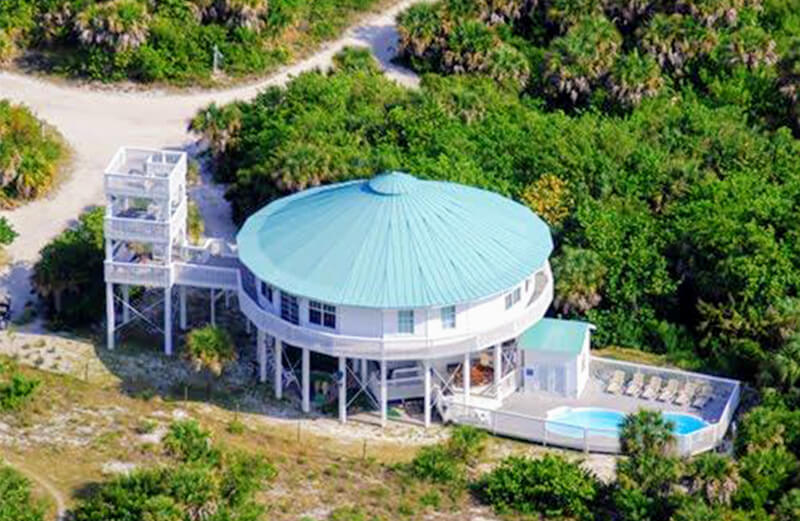In recent years, we’ve witnessed the impact of natural disasters from wildfires to floods, to hurricanes. Hurricane Michael’s desolation of Mexico Beach, Florida, was a grim reminder of how vulnerable traditional architecture is in the face of nature’s fury. Amidst this backdrop, a new vernacular of resilient home design emerges, not just for withstanding the storm but also for curbing our environmental footprint.
A Testament to Resilience: The Round Homes of Deltec
When Hurricane Michael thrashed the Floridian coast with 160 mph winds, Bonny Paulson’s round house stood. Constructed by Deltec Homes, dramatically demonstrating that structural integrity and sustainable living need not be mutually exclusive.
These homes aren’t just marvels of resilient design; they are symbols of an ideological shift towards a balanced co-existence with nature. Superior insulation, energy-efficient heat pumps, and rooftop solar installations speak volumes of a comprehensive approach to sustainability that encompasses both resilience and reduced emissions.
Designing for Tomorrow: Combining Resilience With Sustainability
Other pioneering endeavors like Hunters Point and Babcock Ranch in Florida are reshaping the landscape with communities that are not just hurricane-proof but environmentally conscious. With every structure raised significantly above flood levels, solar-panel fortified steel roofs, and innovative water management systems, these communities are nests of innovation.
At Hunters Point, LEED certifications meet elevated designs and solar-powered resilience, setting a new standard for housing developments. These homes mirror the symbiosis of robust infrastructure and environmental stewardship, featuring on-site energy storage and thoughtfully constructed stormwater systems.
Bridging Past and Future: The Wisdom in Vernacular Construction
Architect Cary Bernstein echoes the sentiment that resilient building design is crucial in maintaining habitability when faced with climate adversities. Prefabrication processes, waste management proficiency, and local climate adaptations — principles integral to vernacular construction — are reemerging with modern vigor in contemporary resilient designs.
Yet, Bernstein also poses a critical question about the future of single-family homes, igniting a discussion on the paradox of resilience versus sustainability. As we forge ahead, technological advances must be paired with cultural shifts to foster a future where density, land use, and community play central roles.
PLACE: Collaboration and Innovation
Within PLACE you can meet developers, builder and manufacturers in our innovative Web 3 showroom called PLACEVerse. We’ve created the Village marketplace to reduce greenhouse gas emissions and waste. This platform enables factories to share their production capacity with each other, fostering collaboration and economic growth within communities while benefiting the environment.
Contact Peter and claim your profile or get set up so you can join our sustainability member only summits!

